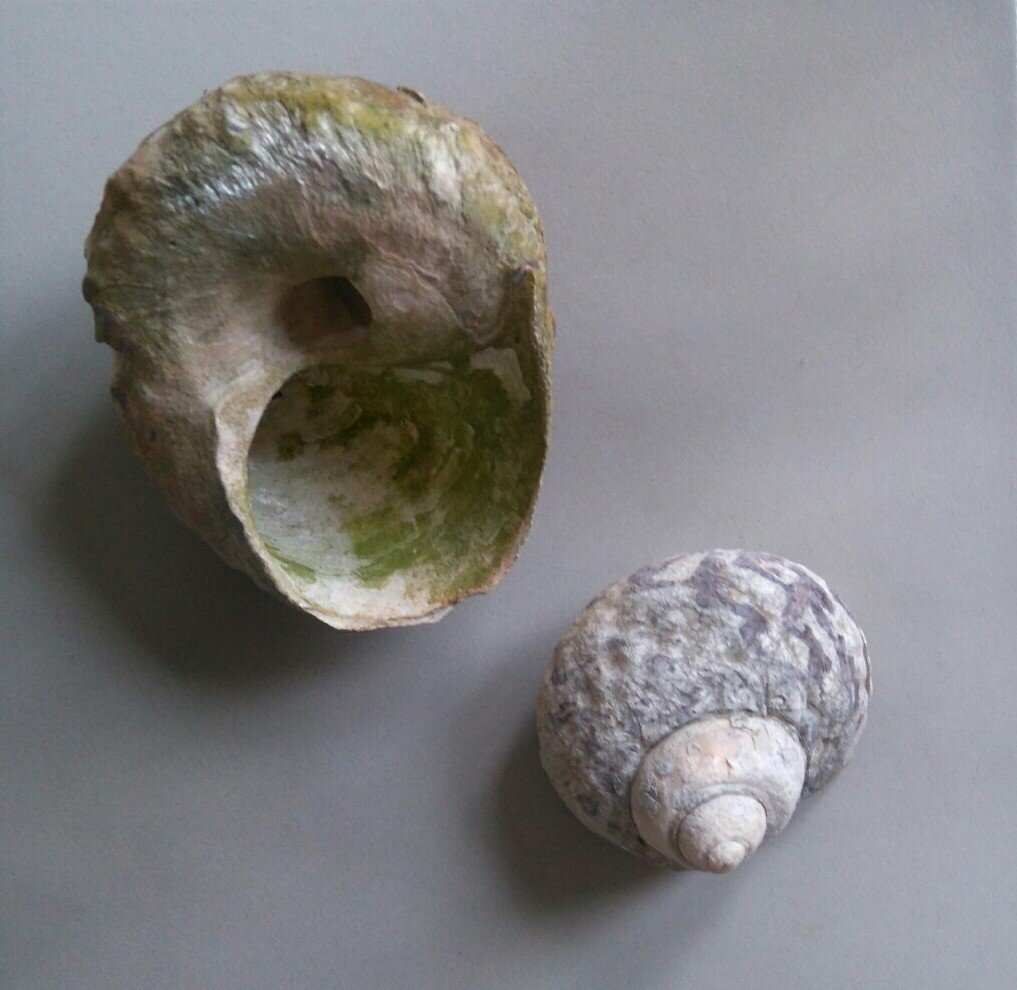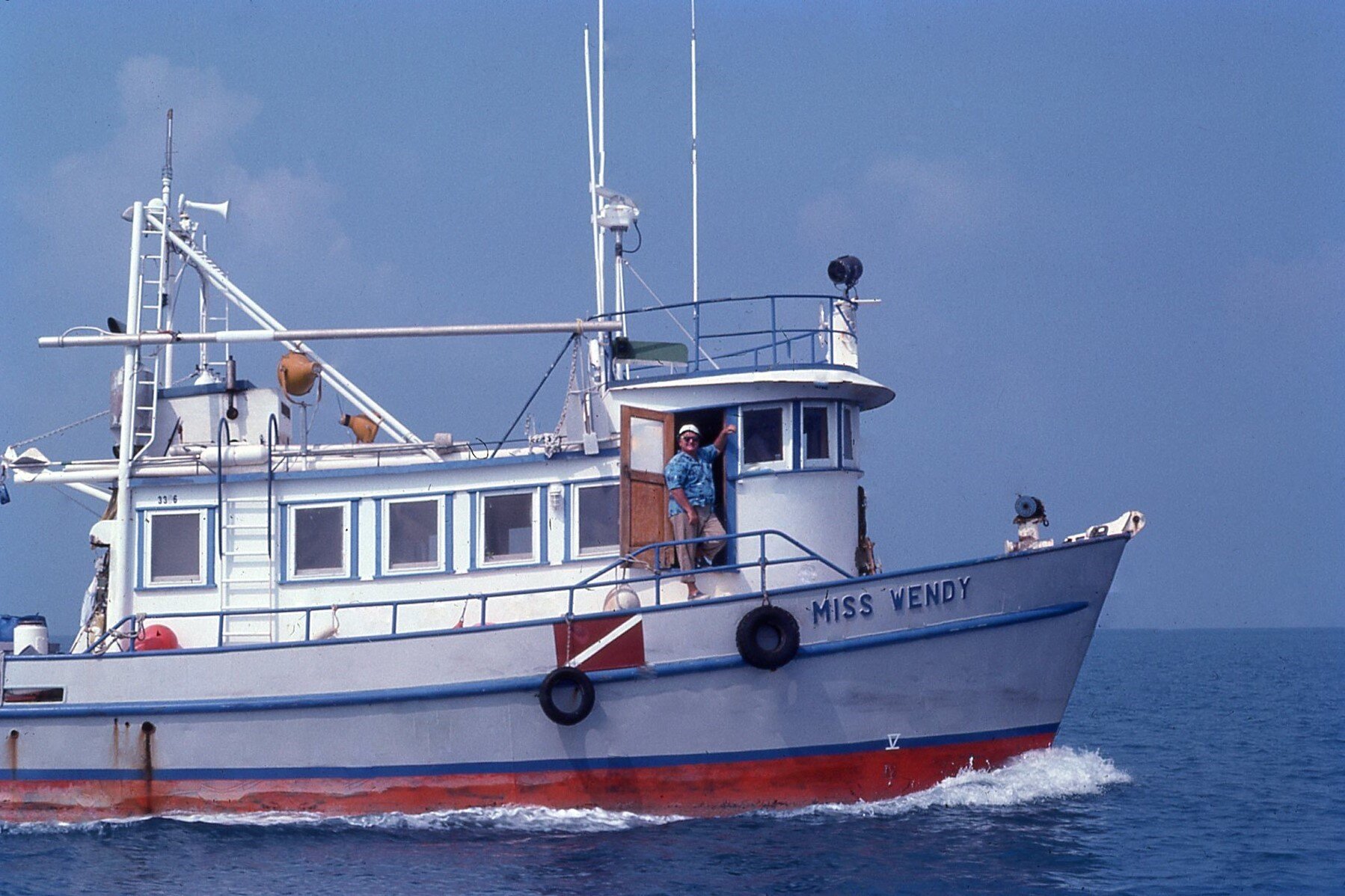Whales & Snails Part 2
Sometimes good deeds go unnoticed. The re-introduction to Bermuda of the West Indian Top Shell, a large marine snail, is credited as one of the island’s greatest conservation success stories. Articles about it focus on the release of 70 snails on Nonsuch Island in 1982 but at the same time, without attracting any attention, there was also a wide scale seeding of bays along Bermuda’s south and western shore.
West Indian Top Shells are the largest of Bermuda’s rocky shore residents. They graze across exposed, wave crashed rocks from Nonsuch Island in the east to West Whale Bay in the west but if you had visited the shore in 1980 you wouldn’t have found any.
Teddy Tucker, like many Bermudians, had noticed the ancient shells cemented into the limestone around the island. Two shells in particular, (pictured below) protruding from the rock-face outside his back door, triggered a memory in him of seeing a living Top Shell as a young boy.
These large snails were a popular food item among Bermuda’s early settlers. Easy to gather at low tide and with tasty meat their continued exploitation led to a local extinction by the mid 1800s (note: Teddy’s childhood encounter took place in the 1930s). In the intervening years there had been some debate as to whether the Top Shells were ever native to Bermuda or introduced by early mariners. However, the existence of shells encased inside local limestone, formed over 10s to 100s of thousands of years, convinced Teddy they must have been present in Bermuda long before the first visits of man.
What motivated Teddy to re-introduce West Indian Top Shells to Bermuda is just speculation. He had traveled to the Caribbean many times and, as a man who paid close attention to nature, knew what the coastal ecosystem should look like and saw that this significant shallow water grazer was missing from Bermuda’s shore. Teddy often said ‘don’t push against nature’, a nod to both the power and fragility of the natural world and was acutely aware of the importance of the interconnectivity of it all. Teddy understood the importance of, and our responsibility to correct the loss of a local species. He was also one of the few people with the means and skills to achieved it.
On previous visits to the Caribbean, Teddy has observed a large population of Top Shells on East Caicos in the Turks and Caicos island chain. He sailed down there on the ‘Miss Wendy’ in the spring of 1982 and started collecting large, healthy animals but the challenge was never sourcing them but how to transport them successfully back to Bermuda.
West Indian Top Shells are notoriously difficult to keep healthy in aquarium conditions so Teddy rigged up an on-board live-well for the journey home. A Boston whaler dinghy was secured to the deck, shaded and enclosed with tarpaulin and constantly replenished with sea water from a large pump. Once underway, Teddy maintained a constant vigil to recapture wandering escapees before they toppled overboard.
The set up was a success and Teddy delivered 86 healthy snails to the Bermuda Aquarium for re-introduction on Nonsuch Island. The remainder, about 150 animals, he released in quiet, inaccessible sections of rocky shore along Bermuda’s south and western coast. Undisturbed, away from man, Teddy chose locations he hoped would give the new arrivals the best possible chance.
And it worked. A 2000 population survey recorded 3673 West Indian Top Shells in Bermuda. Today, the snails are easily spotted on the sharp rocks along Bermudas south shore and their empty shells occasionally roll up on beaches or in tide pools. And, like many other examples of the return of keystone species, the re-introduction may yield wider reaching benefits.
Bermuda’s Land Hermit Crab is on the brink of local extinction, along with its mangrove habitat loss it has been facing a major housing crisis. Due to its large size the only shells it can inhabit are those of the West Indian Top Shell. With the loss of the snail the only shells available to the crabs were ancient shells exposed from the sandy soil after hurricanes. (the use of the shells by roaming land crabs also explains why so many marine shells are found far in land in Bermuda). It is anticipated that the return of the top shells will have a knock on effect and aid the recovery of the Land Hermit Crabs.
Teddy understood that every species plays a role in a balanced ecosystem to the benefit of other species and the system as a whole. He wasn’t what we might recognize as a conservationist, he wasn’t an activist or even an advocate for others to do more but when he saw that something was wrong he set his mind to doing what he could to repair it. He didn’t hesitate and he didn’t seek permission; if your boat has a leak you fix it; if the mangroves are gone, you replace them. Nature belongs to everyone and Teddy was of a generation where you look after what you have and if it needs help you take action.






